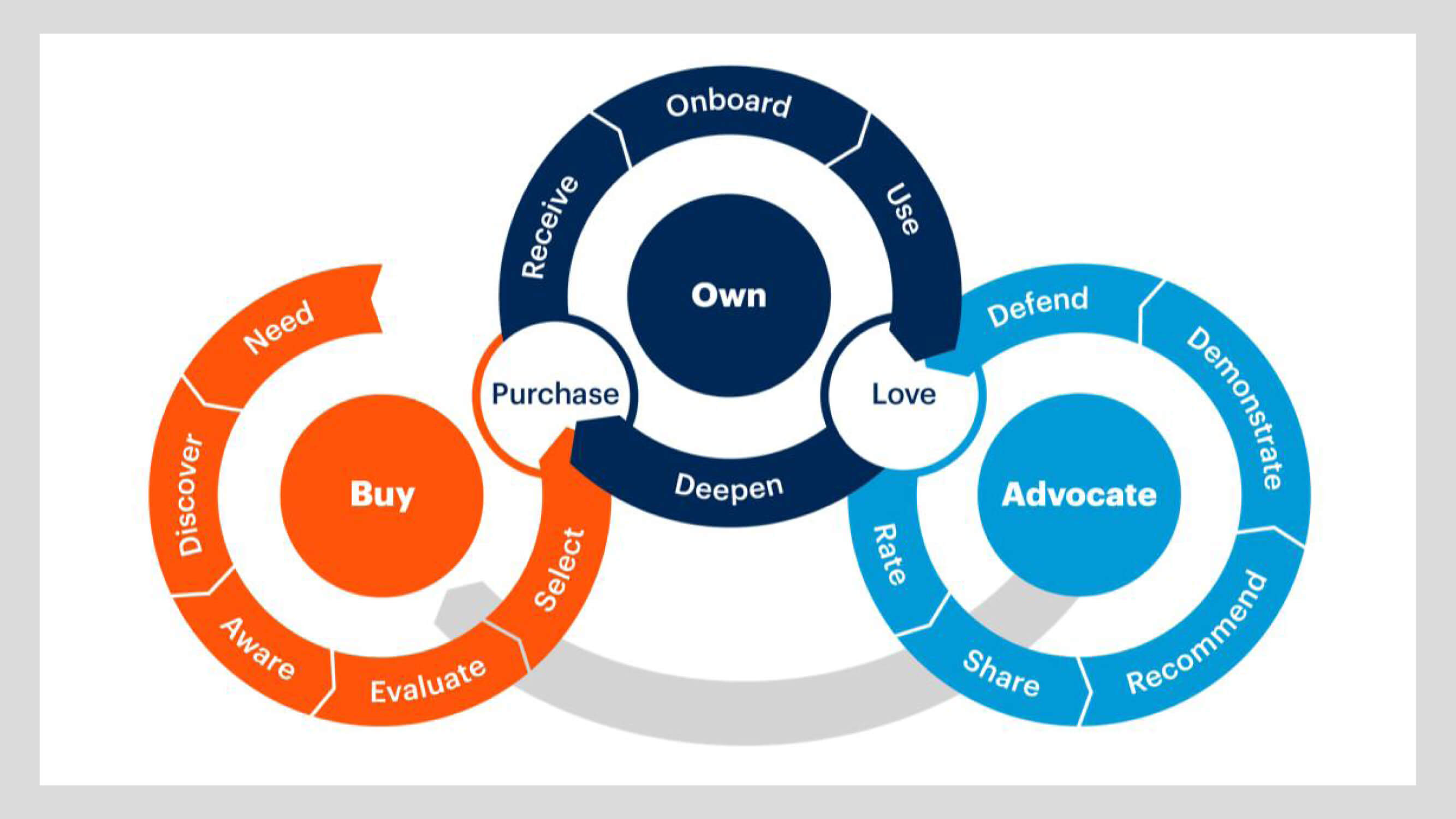10 April 2020
Marketing strategy1 July 2021
In the second part of his CX discussion, Chris provides a few fundamentals that should apply to all of us.
In my previous post on CX, I wrote about:
- Defining CX as the overall, end-to-end experience
- Why CX will be increasingly critical to every company's success, regardless of sector or geography
As promised, here are a few of the CX fundamentals that apply to all of us, whether we’re in Marketing or Sales or Service or other departments and functions.
Back to Fundamentals
Rather than make grand predictions or claims about CX or offer shortcuts & quick tricks (which don’t exist anyways), here are my fundamental tenants of CX. I like to keep these in mind, my CX North Stars, whenever I start working on a new project or when I’m working with clients on a new strategy or initiative. I tried to avoid buzzwords and cliches as much as I could while also dispelling some common CX myths. This isn’t a perfect or exhaustive list but it’s a good starting point and hopefully these are applicable to different kinds of companies and departments.
1. Stop thinking about the customer, start thinking like the customer!
Is it a clever little saying, yes, but it’s much more than that. It underscores where we often go astray with CX. We think and see things through the company lens first and too often forget about making the customer lens our primary perspective. We don’t necessarily do it on purpose, it’s probably more habitual. We fall into the trap of thinking about what we do, why we do it, how we do it, when we do it, etc. Things that we as organisations and companies do to the customer. But that posture is already doomed because you’re still thinking from the company’s perspective instead of from the customer’s perspective.
Whenever you're in meetings or working on projects related to the customer and CX, pause and ask yourself or your colleagues this simply yet powerful question: are we thinking about or thinking like the customer right now? The answer will often be the former instead of the latter. Clearing the air with this question can quickly and easily change perspectives and move you towards better, more productive solutions.
Let me be more specific with a real-life client example. At my previous firm, we profiled a best-practice example from Travelocity (the online travel agency), focused on improving the online customer experience by reduced unnecessary yet expensive customer inquires (through the phone, email, web, or other support channels). It’s also a perfect example of “thinking about” vs. “thinking like” the customer. Here it is:
What’s the difference between the word “luggage” and the word “baggage?” Nothing, they mean the same thing…except that one is more of an industry term and the other is more of a customer term. And guess which word Travelocity's web team used on the FAQ section of their website?
They used the term, “luggage,” which is technically correct…but it's more the industry term instead of the word “baggage,” which is the word that customers use more often.
The end result? Lots of consumers who scanned the FAQs online or searched the website for answers about “baggage” didn’t find anything (which is crazy, given how frequently customers have that question before they fly or take a trip). Then making matters worse, these frustrated customers had to call the customer service department (an expensive and inefficient use of the contact centre’s time and resources) for help. Overall, a frustrating customer experience and an expensive cost of service for the company.
You can almost hear this conversation between customer and customer service rep: the customer can’t believe this information isn’t included in the online FAQ and now they’re having to waste their time trying to call customer support and reach an actual human being for help… at the same time, the customer service rep is also frustrated because they know there’s a FAQ about this topic so why are customers constantly calling in about such a “dumb” question… I think the term here is “lose-lose scenario.”
By the way, Travelocity did eventually figure this out and address the issue. After updating the wording on this issue and making other simple CX improvements that shifted their focus from “thinking about” customers (we should have a “luggage” FAQ on the website) to “thinking like” customers (we need FAQs that use customer language, not industry jargon), they saw an almost 80% drop in negative customer feedback to FAQs and a 5x increase in FAQ clicks.
2. If you’re wondering how your company can be customer-centric, you’ve already missed the boat.
This is a corollary to #1 above. Am I being a little dramatic? Yeah probably, but there’s a kernel of truth in there: being focused on improving the customer experience isn’t something that you do, either once or repeatedly as part of an ongoing task or project. Being customer-centric is supposed to be baked into everything that you do. By singularly calling it out, you’re already misunderstanding what is a world-class customer experience. Which leads to the first myth (thanks to my old Gartner colleague, Ewan McIntyre, for these myths)…
3. CX is a mindset . . . NO, it’s a discipline!
We’ve all heard companies talk about the need to be more customer-centric, which is a valuable mindset to strive for. But would you ever hear a world-class chef describe themselves as food-centric? By framing CX as a mindset, you’re focused on the end result versus the tools and processes to achieve that end result (a company culture focused on consistently delivering a world-class customer experience). It’s like saying “we want growth” or “we want profit”— great, but how do we get there?
There are no quick wins or shortcuts here. If CX was easy to implement, like some kind of off-the-shelf product to install and then be finished, then we’d all have amazing customer experiences already and you wouldn’t need to read any of this.
How do you foster CX as a discipline within your organisation?
If there are no shortcuts, then how do you foster CX as a discipline? There are three, albeit simple but not easy, steps to take:
1. Make customer data & analysis available to all
2. Organise a CX function or team with assigned responsibilities and fund it properly
3. Ensure top leaders model behaivours and have CX-aligned KPIs & goals for performance and rewards
It comes back to honestly and critically understanding your customers and how you fit into helping them achieve what they're seeking in their lives: continually focused on understanding how they think and how they feel. But keep in mind, without the right mix of accountability and continuing to prioritise KPIs that reward short-term thinking (e.g. next quarter’s financial goals) over longer-term thinking (brand health and customer relationships), you won’t make progress towards a world-class customer experience.
P.S.— CX metrics absolutely do matter but please don’t reduce CX down to a metric or liken it to Net Promoter Score (NPS).
For example, NPS has a time and place but as the metric's founder has said, NPS is often misused. Like any single metric, NPS falls down when it’s used as the end-all, be-all answer. I’m not picking on NPS specifically but I flagged these two NPS items in the news recently:
- From the recent Qualtrics event here in Auckland, Bruce Temkin showed fascinating NPS data by country that effectively put the nail in the coffin for trying to compare NPS across regions or countries. Why? Because NPS isn’t applicable to certain countries where people don’t necessarily “promote” even when they had a great customer experience. Here are the slides from that event
- From this May 2021 press release, Gartner is predicting that by 2025, “75% of organisations will have abandoned Net Promoter Score (NPS) as a measure of success for customer service and support." Because it was never intended to be used for that. Granted, this is discussing the customer service function specifically, which is just one part of the end-to-end customer experience, but I think it’s still indicative of the dangers of over relying on any single metric or misapplying a metric to a part of the business where it’s not well suited.
4. CX is the buying journey...NO, it’s the end-to-end journey!
Sales and Marketing play an important part in the overall customer experience, don’t get me wrong, but CX is about so much more than the actual purchase. There are lot of things customers do way before they make a purchase, just as there are lots of things customers do way after they make a purchase (

Likening CX to only the buying journey, however, severely underestimates and misunderstands what customer are actually doing and attempting to achieve for themselves. This goes right back to the trap of thinking about the customer vs. thinking like the customer. We no longer have “buyers,” we have “customers.” If we fail to understand the entire end-to-end journey through the customers' eyes, we’re severely limiting the effectiveness of our CX improvement projects because we’re only focused on part of the puzzle. And the CX rewards are much bigger when we identify the biggest opportunities for delivering stronger relationships and greater growth to our brands. You won’t find these opportunities if your CX focus is too narrowly defined as just the buying journey because you’ll miss the drivers of the wider and longer-term customer experience that wraps around the buying journey. Why bother? Because these drivers are often things that provide the greatest opportunities for you to meaningfully differentiate away from competitors, in ways that work for your customers…and if you must come back to NPS, its those things that will motivate their recommendations!
5. Even though CX is the end-to-end journey, it doesn’t mean you have to be best-in-class in every touchpoint.
Not only would that be really expensive (in time, resources, and budget) and really hard to implement, it’s not really what customers are looking for when it comes to a great customer experience. Said another way: not every touchpoint or part of the customer journey matters the same amount, e.g. kind of like how the 80/20 rule applies here. That should give you relief and confidence that while a world-class CX is no easy feat, it doesn’t mean that you have to be exceptional in everything.
As an example, Gartner researched what aspects of the customer experience had the most impact on customer loyalty (they surveyed
Surprisingly, these factors didn’t have much impact on longer-lasting customer loyalty:
- Delivering an easy and convenient interaction experience creates a good impression, but not one that lasts
- In fact, continued improvement did not result in additional loyalty
- A personalized interaction experience is not a game changer, creating no lasting impact on customer loyalty
Instead, what did build lasting customer loyalty are those parts of your customer experience that create memorable and meaningful impressions-- salient experiences, defined as:
- Enabling customers to feel confident about what they purchased
- Helping customers to feel confident about the value they’d derive from their purchase
This is really about applying the 80/20 rule again: of all the things that you could do to improve the CX and drive higher customer loyalty, what should you do get the most impact?
“Our research suggests customer attitudes are driven by just a fraction of their experiences. If companies can learn to identify these salient experiences, they can then use this understanding to design improvement initiatives more efficiently.” (Gartner’s 2019 report, Creating a High-Impact Customer Experience Strategy)
6. CX is the right thing to do . . . TRUE, but it also drives growth & profit!
I think we do ourselves a disservice by separating CX from ROI or saying things like “make sure you link your CX improvement projects to hard ROI like higher margins, better customer retention, etc.” If there’s an indirect relationship between the two, then yes, you have to make that implicit connection more explicit. However, it shouldn’t be about connecting CX to ROI, it’s showing that CX is ROI! By its very definition, a world-class customer experience is about growth and profit, plain and simple. Is it also the right thing to do for customers, making their experiences simple, easy, compelling, unique, memorable…? Yes, yes, and yes. But let’s not forgot that right alongside customer value there is business value.
There’s nothing wrong with being committed to doing right by the customer...but without demonstrating why CX matters to both your top-line and bottom-line, it’s difficult to sustain a world-class customer experience. We need to (a) know the ROI of CX and (b) promote throughout the organisation that CX is ROI.
A few examples:
1) Three categories of CX ROI:
(a) Buy More= total revenue, average order value, frequency, cross-ell & up-sell
(b) Longer Retention= customer churn/retention rate, dollar retention rate, time-elapsed repurchases
(c) Lower Cost-to-Serve= customer calls & complaint volumes, retention costs
Taken together, this approach quantifies Lifetime Customer Value.
2) Churn + Referral by NPS:
Calculate these three variables:
(a) annual churn (customers who churned in last 12months)
(b) referral rates (customers who generate at least 1 company lead)
(c) annual up-sell dollar amounts by NPS Promoters vs. NPS Detractors.
Once you have those numbers for the three variables, assign a Lifetime Customer Value to both Promoters and Detractors. Adding up those total differences in Lifetime Value shows the value of a good customer experience (e.g. one that creates more promoters vs. detractors).
3) IPSOS’ CX ROI Approach:
They built a simulator based on multivariate statistical modelling. A simplified version looks like this (from their Nov. 2020 paper, “Money talks or budget walks”):

7. Lastly, there’s an experience premium when you deliver outstanding CX.
Following on from the Amazon.com Effect, companies that excel in delivering exceptional customer experiences can earn a higher profit margin as compared to average-performing organisations. If more and more competition means that companies increasingly see price parity as well as their products & services becoming harder to differentiate against their competitors, then what’s left to distinguish your company is the customer experience. And when you deliver that world-class customer experience, you can charge a price premium that customers will happily pay, because they feel it's worth it.
For more on this, here's the co-founder of Qualtrics writing about the experience premium.
Conclusion
Stop thinking about the customer, start thinking like the customer!
I think this one sentence (maybe we could call it a mantra) accurately defines the world of customer experience. Your individual answer, as well as the consensus from your colleagues and different business departments, candidly informs how your company thinks about CX (as long as you challenge yourself to answer the question honestly and humbly): are we a “think about” vs. “think like” organisation?
CX is an increasingly hot topic right now but it can also be negatively perceived as another corporate buzzword, here today, gone tomorrow. With that comes added pressure for CX individuals, teams, and departments to deliver meaningful and differentiated customer experiences that will build enduring customer loyalty. And yet, most aren’t achieving their CX goals. Why is that?
There’s a fundamental mismatch between (a) what customers value and need to remain loyal vs. (b) what CX teams spend their time and resources trying to fix.
We don’t need to boil the ocean but we do need to look in the right places. We don't have to improve every touchpoint along the end-to-end customer journey so that it’s performing at a world-class standard but we do need to addresss the key moments. How? We would all see much better results by focusing our scarce time and resources by not trying to fix the most common CX problems where you score the worst but by focusing on which issues, touchpoints, and parts of the overall experience are the most memorable and important to our customers. After identifying those key areas, we can then help customers (a) feel that they’ve made the correct purchase decision and (b) feel that they’re benefitting from using the product or service they purchased. That’s how we should prioritise CX improvements to drive better, more sustainable customer loyalty.
Final note—I’m new to New Zealand so please weigh in, what did I get right and what did I get wrong? Are these CX principles relevant and prevalent here in NZ? What did I miss? Thanks for your thoughts, comments, and feedback.
If you'd like to hear more about how we can help you discover the things that matter to your customers in their CX experience, please contact us. You can subscribe to Frame or live chat with the team right here on this page.





 Tags:
Tags: